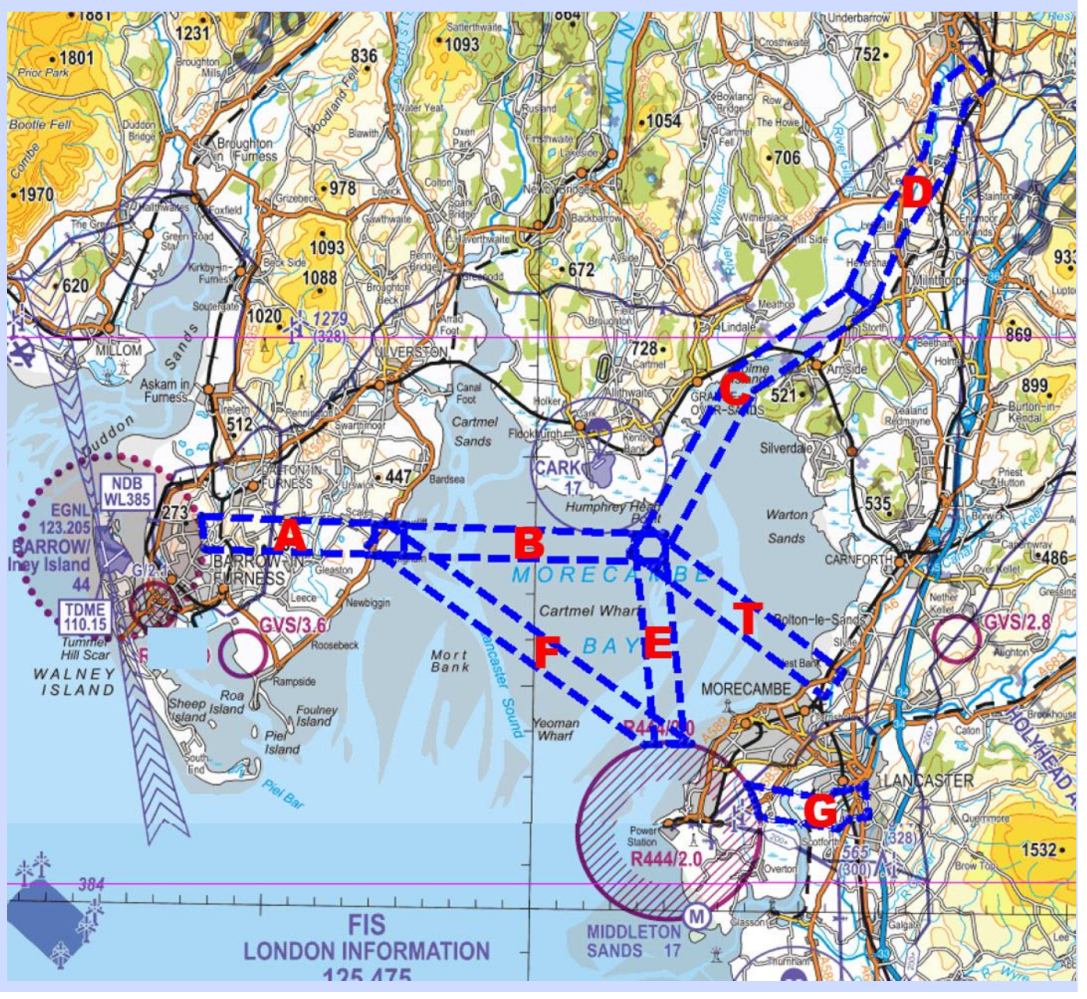
Administrators of the UK’s National Health System in the northwest of England are looking to use drones for regular, speedier supply shuttles between regional hospitals separated by the broad Morecambe Bay, and a system of frequently clogged roads.
The plan arises from a study begun last year to establish corridors for remote piloted aircraft systems (RPAS) in which drone supply shuttles may operate between the local Lancaster Royal Infirmary, Furness General, and Westmorland General Hospitals. Those facilities are located in a triangle around Morecambe Bay, whose estuaries and sand flats spread out over some 120-square miles.
After a first phase of studies during the second half of last year, administrators at the University Hospitals of Morecambe Bay NHS Trust have now launched a consultation process that – pending UK Civil Aviation Authority authorization – seeks to usher in drone supply shuttles linking the hospitals in June.
“The aim of these flights is to transfer pathology samples and medications between the hospitals in a more efficient manner, providing optimized healthcare to the Morecambe Bay population,” explains the site hosting the Morecambe Bay RPAS Transit Route project. “With the relevant approvals in place, we plan to conduct Beyond Visual Line of Sight operations between the above-mentioned sites.”
Implementation of the plan is expected to produce considerable gains in speed and efficiency in the transportation of urgent or sensitive supplies. It will also diminish carbon emissions now produced by ground vehicles.
Reports say rotating deliveries by van involve seven continual hours of driving each day, covering a total of 321 miles between the hospitals. Use of drones on regular runs is expected to cut transport time between each site from the current 81 minutes to 28.
Such savings of time would be particularly important when drones are shuttling urgent supplies like chemotherapy drugs, or patient samples requiring speedy testing. The use of UAVs, moreover, would virtually eliminate some of the recurrent surprises encountered on the region’s roads.
“The A590 is infamous for its holdups, causing considerable excess time to be taken when moving samples from one hospital to the next,” the project site notes. “The geography of Morecambe Bay causes excess journey times between the three hospitals that serve the Bay Community.”
As they continue consultation with partners and seek regulator approval, project organizers are moving ahead with a 12-week indicative flight campaign to test all aspects of operation across the seven connected corridors to be established. When payloads are factored in, trial drones will shuttle blood plasma, patient records, and drugs between the hospitals.
The Morecambe Bay project is one of several in the UK that have started – or are hoping to launch – drone shuttles of supplies between hospitals. Those include trials of chemotherapy deliveries from southern England to the Isle of Wight, and a plan in Essex to transport various materials by UAVs between regional facilities.
“Faster processing of medical samples and data between hospitals will lead to improved healthcare for the Bay community,” says the Morecambe project site. “Our flight campaign will prove the business model of drone freight systems whilst adding proven metrics in the fight to reduce carbon emissions across the Bay.”
FTC: We use income earning auto affiliate links. More.



Comments